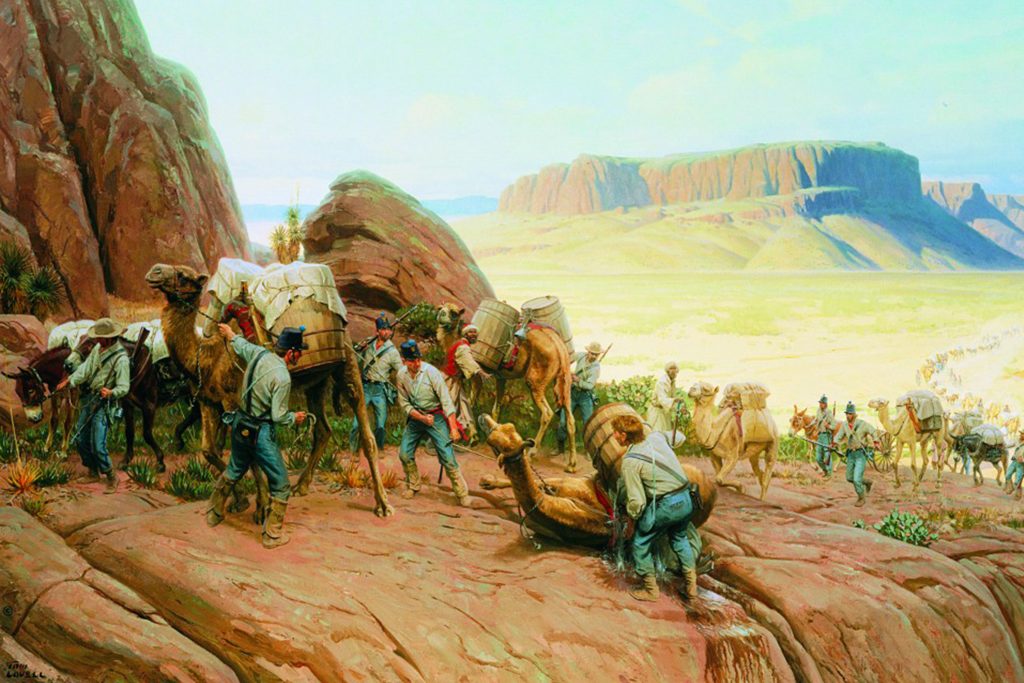Weird History: The Great Texas Camel Experiment
In the mid-19th century, the United States was engaged in a fierce battle for territory and influence. As the nation expanded westward in the wake of the Mexican Cession of 1848, the U.S. Army faced the daunting challenge of transporting supplies across West Texas’ arid, inhospitable terrain.
With no railroads and few reliable roads, the Army turned to a peculiar solution: camels

A Curious Proposal
The idea of using camels in Texas was not entirely without merit. Having proven their worth as beasts of burden in the deserts of the Middle East, camels were known for their incredible stamina and ability to carry heavy loads over long distances.
In 1855, Secretary of War Jefferson Davis proposed the concept to Congress, which, in turn, approved $30,000 for the acquisition of camels and the establishment of the U.S. Army Camel Corps.
After the Army sent a naval ship to scour North Africa for available herds, the first shipment of 34 camels arrived in Texas in 1856, followed by a second shipment of 41 in 1857. The camels were put to work transporting supplies from San Antonio to Camp Verde, about 63 miles northwest. Another camel trek reached deep into Big Bend.
The Pros and Cons of Camels
Initially, the camels proved to be effective pack animals. They could carry up to 600 pounds of supplies and travel as much as 30 miles per day without the need for water. Their padded feet were better suited for the desert terrain than the hooves of horses and mules, causing less damage to the fragile ecosystem.
However, the camels’ success was short-lived. While they possessed many advantages, the animals also brought numerous problems. Their stubborn, ill-tempered nature made them difficult to handle, and their distinctive odor proved to be a point of contention with both soldiers and local residents. Most problematic of all, the camels terrified the Army’s horses and mules, causing chaos whenever the species crossed paths.
By the end of the 1850s, the experiment began to unravel. The Civil War erupted in 1861, and while 80 camels and two Egyptian camel drivers were conscripted into the Confederate army, the animals soon fell out of favor. Eventually, most were sold off to private owners, while a few were simply set loose to roam the Southwest. Wild camel sightings were reported up until the 1940s.

The Camel Campaign Comes to an End
In the end, the great camel experiment was not completely unreasonable—the French and British armies similarly used camels in some of their campaigns. Despite their effect on the military’s horses, the camels did prove effective for the task they were given.
It’s thought that one reason the military disbanded the camels is that many of their proponents defected to the Confederacy during the Civil War.
But by the time the railroads began to trace their steel lines across the American frontier in the wake of that conflict, the brief era of the Texas camel was destined to persist only as a curious historical footnote.
Camels aren’t the only animals that share a part in Texas’ weird history. Read about the goat mayors of Lajitas to learn a truly fun, and admittedly bizarre, fact about our great state.
© 2023 Texas Farm Bureau Insurance



